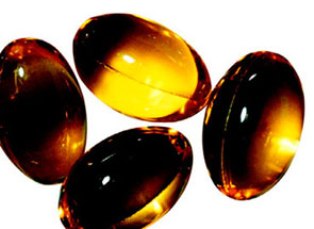
 Vitamin D has been talked about as the vitamin a?? the one??that might help fend off??everything from cancer to heart disease to autoimmune disorders, if only we were to get enough of it.
Vitamin D has been talked about as the vitamin a?? the one??that might help fend off??everything from cancer to heart disease to autoimmune disorders, if only we were to get enough of it.
a??Whoa!a?? is the message from??a committee of experts assembled by the Institute of Medicine (IOM) to update??recommendations??for vitamin D (and for calcium).
The??IOM committeea??s report, released??this morning, says evidence for??many of ??the health claims for??vitamin D??is a??inconsistent and/or conflicting or did not demonstrate causality.a?? The exception is the vitamina??s well-documented??(and noncontroversial) benefits on??bone growth and maintenance.
The IOM panela??s report also??says most North Americans (Canadians as well as Americans)??have more than enough vitamin D in their blood to achieve the desired effect on bone. The??committee said??a blood level of 20 nanograms per milliliter (ng/mL) is sufficient for most people.
The??panel??set 600 International Units (IU) as??the recommended daily??intake??for children and??for adults ages 19 to 70. People ages 71 and older are supposed to??get an additional??200 IU,??or 800 IU a day.
Thata??s??a fairly sizable??increase over the??previous recommendations of??200 IU per day through age 50, 400 IU for people ages 51 to 70, and??600 IU for people ages 71 and older.
The safe upper limit on daily intake had been 2,000 IU for most age groups. Todaya??s committee report??increased that to 4,000 IU.
Here is the conclusion of a??four-page summary of the??full book-length report:
Scientific evidence indicates that calcium and vitamin D play key roles in bone health. The current evidence, however, does not support other benefits for vitamin D or calcium intake. More targeted research should continue. However, the committee emphasizes that, with few exceptions, all North Americans are receiving enough calcium and vitamin D. Higher levels have not been shown to confer greater benefits, and in fact, they have been linked to other health problems, challenging the concept that that a??more is better.a??
The new vitamin D recommendations are??bound to kick up some??controversy??because many researchers,??led by Dr. Michael F. Holick,??have argued that??Americans should be consuming a lot more vitamin D than they are now,??with??800 to 1,000 IU a day??being the??bare minimum and??over 2,000 IU a day??as??being??closer to the??optimum.
Vitamin D proponents have also said the goal for??blood levels should be??30 ng/mL. The??IOM panel says??levels that high are not associated with any health benefit and adds that levels above 50 ng/mL a??may be reason for concern.a??
The committeea??s calcium??recommendations are not likely to be nearly as controversial as??its advice on vitamin D.
The summary of the panelsa?? report??says??national surveys show that most people in the United States and Canada get enough calcium, the notable exception being??girls ages 9 to 18.??The panel warns that postmenopausal women who take calcium supplements may be increasing their risk for kidney stones by getting too much of the mineral.
i
No comments:
Post a Comment